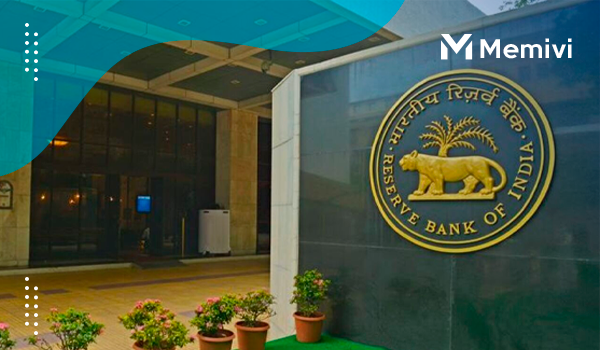
The rise of digital currencies has been one of the most fascinating technological advancements of the last decade. As cryptocurrencies such as Bitcoin and Ethereum continue to gain popularity, a new entrant into the digital currency space has emerged – the Digital Rupee. While some may consider it just another cryptocurrency, the Digital Rupee has a unique distinction from its peers.
In this post, we will explore the world of digital currencies and provide an in-depth look at the Digital Rupee. From its inception to its benefits and differences from cryptocurrencies, we will take you on a journey to understand this exciting development in the world of digital currencies. So, grab a cup of coffee and join us on this journey to explore the Digital Rupee.
What is the Digital Rupee and why is it gaining popularity?
In recent years, the concept of a digital currency has gained immense popularity, with cryptocurrency being at the forefront of this revolution. However, in the midst of this digital currency frenzy, another term has emerged – the Digital Rupee.
But what exactly is the Digital Rupee, and why has it been gaining traction in the financial world?
The Digital Rupee is a digital representation of traditional currency, specifically the Indian Rupee. It is a government-backed digital currency that aims to provide a secure and efficient means of conducting financial transactions in the digital realm.
Unlike cryptocurrencies such as Bitcoin or Ethereum, which operate independently of any central authority, the Digital Rupee is issued and regulated by the Reserve Bank of India (RBI).
One of the main reasons why the Digital Rupee has been gaining popularity is the potential it holds for financial inclusion. In a country like India, where a significant portion of the population is unbanked or underbanked, the Digital Rupee can provide a gateway to financial services for millions of people.
With the increasing penetration of smartphones and internet connectivity, the Digital Rupee can enable individuals to access and participate in the digital economy, making financial transactions more accessible and convenient.
Moreover, the Digital Rupee offers several advantages over traditional cash transactions. It can streamline payment processes, reduce transaction costs, and enhance transparency. With its digital nature, the Digital Rupee can be seamlessly integrated into various digital platforms and payment systems, enabling efficient and secure transactions in both online and offline settings.
Understanding the key differences between the Digital Rupee and Cryptocurrency
To fully grasp the significance of the Digital Rupee, it is crucial to understand the key differences between this emerging digital currency and its well-known counterpart, cryptocurrency.
First and foremost, the Digital Rupee is a centralized digital currency issued by the central bank of a country, in this case, the Reserve Bank of India. It is backed by the government and operates within the existing financial system. On the other hand, cryptocurrency, such as Bitcoin or Ethereum, is decentralized and operates on a peer-to-peer network, independent of any central authority.
Another distinguishing factor between the Digital Rupee and cryptocurrency lies in their underlying technology. While cryptocurrencies utilize blockchain technology, a distributed ledger system that ensures transparency and security, the Digital Rupee is likely to be built on a centralized infrastructure, allowing the central bank to maintain control over its issuance and regulation.
Furthermore, the purpose and use cases of these digital currencies differ substantially. Cryptocurrencies are primarily seen as alternative forms of currency, aiming to revolutionize the traditional financial system and enable secure, borderless transactions. In contrast, the Digital Rupee is intended to complement the existing fiat currency and enhance the efficiency of domestic transactions within the country.
It is worth noting that the emergence of the Digital Rupee does not undermine the potential of cryptocurrencies. Both digital currencies serve different purposes and cater to distinct needs within the evolving financial landscape. While cryptocurrencies aim to challenge the existing financial system, the Digital Rupee seeks to leverage digital technology to enhance the efficiency and accessibility of traditional monetary transactions.
The role of a central bank in issuing and regulating the Digital Rupee
When it comes to the Digital Rupee, the role of a central bank is crucial in its issuance and regulation. Unlike cryptocurrencies that are decentralized and operate independently of any central authority, the Digital Rupee is a digital form of fiat currency issued and regulated by a central bank.
Central banks, as the primary monetary authority of a country, have the responsibility of maintaining price stability, controlling inflation, and ensuring the smooth functioning of the economy.
With the advent of digital currencies, central banks are now exploring the possibility of introducing their own digital versions of national currencies, such as the Digital Rupee.
The central bank’s involvement in issuing and regulating the Digital Rupee allows for greater control and oversight over the currency. This means that the central bank can set monetary policies, enforce regulations, and monitor transactions to ensure compliance with anti-money laundering and know-your-customer regulations.
Potential benefits and use cases of the Digital Rupee in everyday transactions
The Digital Rupee, a digital currency issued by the central bank of a country, holds immense potential to revolutionize everyday transactions. Unlike cryptocurrencies such as Bitcoin or Ethereum, the Digital Rupee is a government-backed digital currency that aims to combine the advantages of traditional fiat currencies with the efficiency and security of blockchain technology.
- Streamline transactions
One of the key benefits of the Digital Rupee is its ability to streamline transactions, making them faster and more secure. With traditional banking systems, cross-border transactions can be time-consuming and costly due to intermediaries and complex processes. However, with the Digital Rupee, these transactions can be executed seamlessly, reducing transaction fees and eliminating the need for multiple intermediaries.
- Financial inclusion
Another significant use case of the Digital Rupee lies in financial inclusion. In many countries, a significant portion of the population is unbanked or underbanked, lacking access to basic financial services. By adopting the Digital Rupee, governments can provide these individuals with a digital wallet, enabling them to participate in the digital economy and access financial services such as savings accounts, loans, and insurance.
- Enhance transparency in the government
Furthermore, the Digital Rupee can enhance transparency and reduce corruption in financial transactions. Blockchain technology, which underpins the Digital Rupee, offers an immutable and transparent ledger of all transactions. This means that every transaction involving the Digital Rupee can be traced and verified, reducing the risk of fraud and ensuring accountability.
- Facilitates micropayments
Additionally, the Digital Rupee can facilitate micropayments and peer-to-peer transactions. With the rise of the gig economy and the increasing popularity of online platforms, the ability to make small, instantaneous payments becomes crucial. By utilizing the Digital Rupee, individuals can easily transfer funds to each other without the need for traditional banks or third-party payment processors.
Challenges and concerns surrounding the adoption of the Digital Rupee

As with any emerging technology, the adoption of the Digital Rupee comes with its fair share of challenges and concerns. While the potential benefits of a digital currency are undeniable, it is crucial to address the potential hurdles that may arise during its implementation.
One of the primary concerns is privacy and security. With digital transactions becoming more prevalent, ensuring the privacy and security of personal and financial data becomes paramount. The Digital Rupee must have robust encryption protocols and stringent security measures to protect users’ sensitive information from unauthorized access or potential cyber threats.
Another challenge lies in the technological infrastructure required to support the widespread adoption of the Digital Rupee. The existing financial systems and networks would need to be upgraded or revamped to accommodate seamless transactions using the digital currency. This includes enhancing internet connectivity, developing user-friendly digital wallets, and implementing efficient payment gateways to facilitate smooth transactions.
Lastly, there may be resistance and skepticism from individuals who are not yet familiar with or comfortable with using digital currencies. It will be essential to educate and create awareness among the general public about the advantages and safety measures associated with using the Digital Rupee. Building trust and confidence in the system will be crucial for its successful adoption.
Final Thoughts
As the digital rupee continues to evolve, it will undoubtedly reshape the way we transact, invest, and interact with traditional fiat currencies. Stay informed, embrace the future of digital currencies, and keep exploring the exciting developments in this rapidly evolving space.


 Why Investors Should Approach a Strong Economy with Caution? <p class='sec-title' style='line-height: normal; font-weight: normal;font-size: 16px !important; text-align: left;margin-top: 8px;margin-bottom: 0px !important;'> In the world of investing, a strong economy is often viewed as a signal to buy and invest heavily. However, this approach can sometimes be a mistake. </p>
Why Investors Should Approach a Strong Economy with Caution? <p class='sec-title' style='line-height: normal; font-weight: normal;font-size: 16px !important; text-align: left;margin-top: 8px;margin-bottom: 0px !important;'> In the world of investing, a strong economy is often viewed as a signal to buy and invest heavily. However, this approach can sometimes be a mistake. </p>  RBI Continues With A Pause On Rate Hikes Amid Focus On Curbing Inflation <p class='sec-title' style='line-height: normal; font-weight: normal;font-size: 16px !important; text-align: left;margin-top: 8px;margin-bottom: 0px !important;'> Staying the Course: RBI Holds Rates Steady in Efforts to Tackle Inflation. Get the Inside Scoop on India's Monetary Policy. </p>
RBI Continues With A Pause On Rate Hikes Amid Focus On Curbing Inflation <p class='sec-title' style='line-height: normal; font-weight: normal;font-size: 16px !important; text-align: left;margin-top: 8px;margin-bottom: 0px !important;'> Staying the Course: RBI Holds Rates Steady in Efforts to Tackle Inflation. Get the Inside Scoop on India's Monetary Policy. </p>  The Future is Now: A Guide on How to Invest in AI <p class='sec-title' style='line-height: normal; font-weight: normal;font-size: 16px !important; text-align: left;margin-top: 8px;margin-bottom: 0px !important;'> Your Trusted Source for AI Investment Guidance: Let's Navigate the Future Together. Explore AI Opportunities Today </p>
The Future is Now: A Guide on How to Invest in AI <p class='sec-title' style='line-height: normal; font-weight: normal;font-size: 16px !important; text-align: left;margin-top: 8px;margin-bottom: 0px !important;'> Your Trusted Source for AI Investment Guidance: Let's Navigate the Future Together. Explore AI Opportunities Today </p>